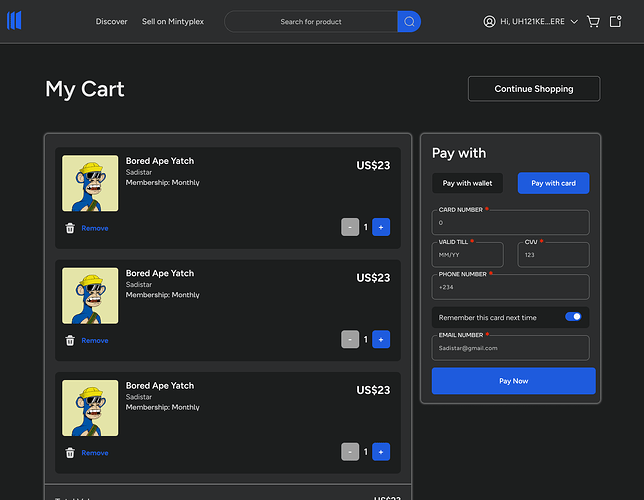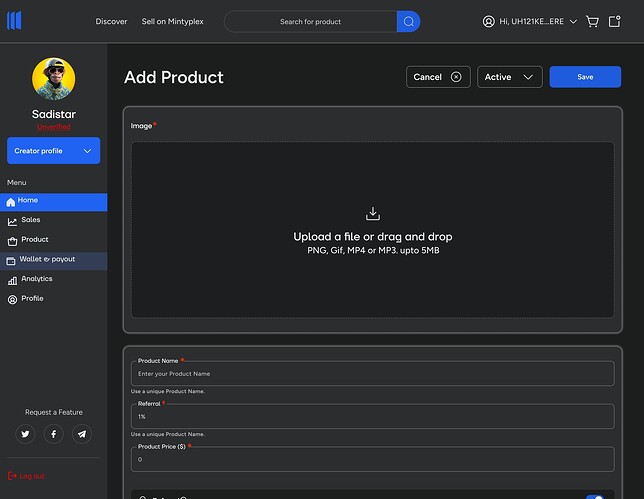Hi @PxC,
Thank you for your thoughtful questions. It’s evident that you have a keen interest in both Sia and Mintyplex.
To address your inquiries:
In our current plan (v1), we’ve strategically separated functions to optimize time, cost, and resource efficiency.
Storage on Sia is a central component, while payment processing will occur on a Blockchain with a substantial user base, such as Polygon.
Our partner facilitates seamless transactions, providing creators or affiliates with a Polygon version of the supported currency, like USDC.
Funds won’t be held under our wallet. We employ account abstraction, allowing creators the flexibility to freeze, view, or even stake their earnings (in v2).
Our website (https://www.mintyplex.com) uses domain names with attached wallet addresses for decentralized fund disbursement through smart contracts.
Our smart payment contract automates fund disbursement directly to creators’ wallets after deducting our fees, which currently range from 5-10% (5% for registered creators, 10% for unregistered ones).
Exchange fees are limited to those imposed by our partner.
To earn $10 USDC on Mintyplex, a developer should list their game for approximately $10.6 (verified) or $11.2 (unverified).
Verification requires linking at least one social account (e.g., X or Instagram) with a custom username.
We’re actively exploring handling VAT and sales tax on behalf of creators and welcome support or advice on this matter.
All digital products will be hosted on Sia, ensuring security.
Upon purchase, the product is stored on the buyer’s profile and is viewable only from their account, plus product is encrypted, restricting sharing or downloading by anyone else.
Our next version (v2) will expand features and introduce a mobile application.
I hope these answers sufficiently address your questions.
If you have further inquiries, I’m eager to discuss them in more detail.


